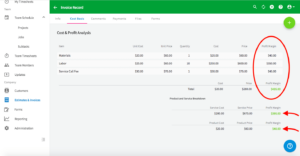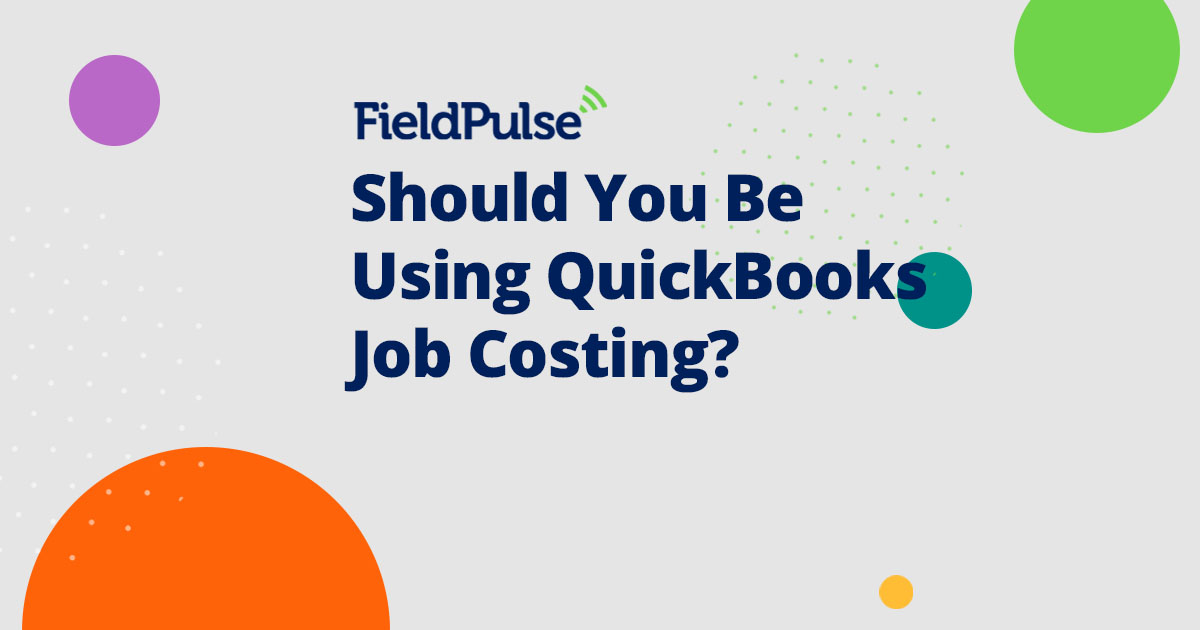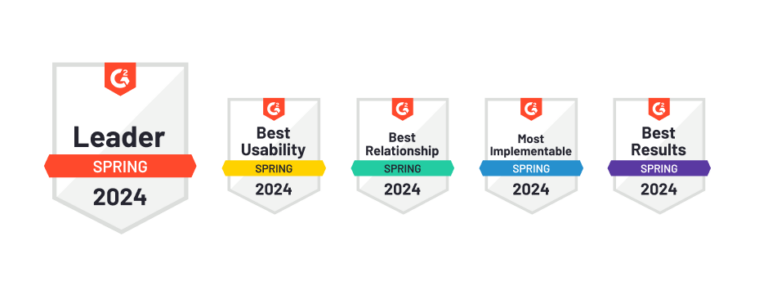
If you’re like a lot of contractors, you’re likely using QuickBooks for your accounting needs. It’s one of the most popular products on the market. But are you using the QuickBooks job costing features?Job costing can be a critical step in growing your contracting business.
By tracking your costs and profitability on every job, you’ll be able to focus on what’s working (and avoid what’s not). If you’re already using contractor software, this could be a big step in becoming more profitable.It’s important to consider why you should use job costing, then take a look at options. Should you set this up in QuickBooks, or should you look for an alternative?
Why Consider Job Costing
Before looking at the “how” of job costing, let’s look at the “why.” Your business probably relies heavily on estimating projects. Because your work is labor-intensive, it’s really important to know your people costs. If your work is project based, then you have to maximize every project to keep up profits. All of these point to needing to know your costs, and your profits, on every job.
Job costing allows you to track your estimated costs, billed amounts, and actual job costs for each project. If you’ve given a quote for a project, job costing allows you to look at both your estimated and actual hours and materials to determine your profit on this job. When you can do this across all of your work, you will have a better understand of what drives your profitability.
Over the long run, this will make your estimating, job assignments, and scope of work much more effective.With a clear view of why job costing is important to your business, now it’s time to look at how QuickBooks can help you track this information.
QuickBooks Job Costing
If you’re already using QuickBooks, you may suspect that job costing is simply a more advanced feature that you just haven’t figured out yet. Unfortunately, that isn’t necessarily the case. In fact, if you are well established with QuickBooks for your business, adding in job costing can be a challenge. While it can be done, it’s usually easier set up when you’re starting your QuickBooks account.
Just a few years ago, job costing was generally considered “impossible” in QuickBooks. A few savvy accountants figured out a way to jump through hoops and make it happen. Now that more businesses are moving toward cloud based accounting with QuickBooks Online, the old tricks no longer work their magic. There’s a little bit of a process that you have to walk through to set this up.
Before starting, QuickBooks recommends you call and talk with a customer service representative. They’ll talk you through whether job costing is right for your type of business. For contractors, job costing is essential, so they’ll concede that you do need to get set up. Then, they can guide you through the five step process of how it works in QuickBooks. Or you can follow the steps below:
Setting up QuickBooks Job Costing
- The first step is to configure QuickBooks for job costing. This includes appropriate modification and determining whether time trafficking is active.
- The second step required you to define job types before you assign jobs to clients. This step is one of the reasons that it easier to enable QuickBooks job costing when you are first setting up QuickBooks, not at a later time. You’ll have to repeat this step for multiple job types to create subtypes for each category.
- Next you will assign tasks to your clients, as the customer jobs will be their own distinct entity. After you create the Job Name, you’ll need to assign the Job Status to each one from choices of None, Pending, Awarded, In Progress, Not Awarded, or Closed.
- Now you’ll need to produce invoices throughout the job. This involves creating an estimate and choosing from three different invoicing options.
- Finally, you’ll need to run advanced reporting. You’ll have different reports to compare the effectiveness of your job costing such as estimate accuracy, time and mileage, sunk costs, job status, and productivity.
This will get you set up and provide you more reporting. But, is that an effective use of your time? QuickBooks is a great accounting option for all types of businesses. However, job costing is one area where contractors have different needs than businesses in other industries. You need to review your effectiveness in estimating, accuracy in labor costs/materials planning, and allocation of resources. Job costing isn’t an add-on feature for a contractor’s accounting. It’s an essential need.
Job Costing with FieldPulse
FieldPulse’s contractor-specific job costing builds on QuickBooks’ accounting functionality. Instead of being a work around, FieldPulse is designed for contractors and integrates the essential function of job costing into the program. Beyond that, job costing is one feature combined with a contractor CRM, job scheduling features, estimates/invoices, employee timesheeets, and more.
Consider the simple three-click process to activate job costing: From the Administrator’s left side menu, click “Estimates and Invoices” on the toolbar. Choose “Advanced” on the sub toolbar, then enable “Invoice Cost Basis” in the middle of the page. You can also select to limit the view of invoice cost items to managers or service agents. All that’s left is to hit Save. That’s it.

Now you’re able to track job costing when building estimates and invoices. From the Estimates and Invoices page, click on the green plus sign to create a new item. The “Add Line Item” option while creating the new invoice allows you to enter your unit cost, and then hit Save. This information is hidden from your customers; it won’t appear on the invoice. From the Cost Basis menu, you can view columns for Unit Cost, Unit Price, Quantity, Cost, Price, and Profit Margin, as well as an overview of Cost, Price, and Profit Margin for the invoice as a whole.Ready to try this out? Start your 14-day free trial today.
Get Started with Job Costing
Just from the ease of use alone, it’s easy to see why contractors would prefer software designed for them. More importantly, you don’t have to compare multiple reports to improve your estimating process, find out which jobs are profitable, or determine your weak spots.
Contractors who get the most out of job costing are the ones thriving. In today’s competitive market, just guessing whether your estimates are accurate isn’t going to cut it. A contractor needs accurate, easy-to-access information that’s based on data that was easy to set up and enter.
With all of the other demands on your time, simplifying job costing means you’ll get the information when and where you need it.


